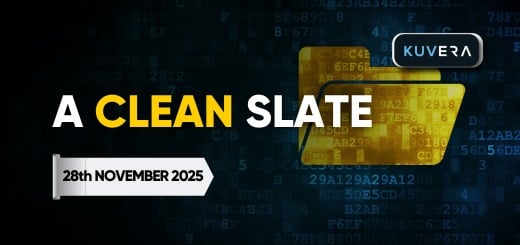This week, we talk about the evolution of Tata Group’s consumer products business and its latest acquisitions. We also discuss why the quarterly earnings of HDFC Bank have raised concerns and what are the expectations from the upcoming interim budget.
Welcome to Kuvera’s weekly digest on the most critical developments related to business, finance, and the markets.
tl;dr Hear the article in brief instead?

Almost twenty-four years ago, in February 2000 to be precise, Tata Tea bought Britain’s Tetley Tea for $432 million.
This month, Tata Tea’s successor spent nearly double that amount to buy two Indian companies. These acquisitions two decades apart show how Tata Group’s consumer goods business has evolved and finally found its groove.
The Tetley acquisition was significant for several reasons. For one, it was the Tata Group’s first major overseas acquisition. Tetley was twice Tata Tea’s size, and its acquisition gave the group confidence to buy many more assets worldwide in the first decade of the 21st century. These included the commercial vehicle unit of South Korea’s Daewoo, Singapore’s NatSteel, Anglo-Dutch steelmaker Corus, and British luxury car brands Jaguar and Land Rover.
Tetley was also the first major purchase by the group in the consumer goods business. After Tetley, Tata Tea bought US-based Eight O’Clock Coffee and tea brand Good Earth in 2005. It also acquired beverage brands in Poland, the Czech Republic and South Africa, and renamed itself as Tata Global Beverages Ltd in 2010. But it would take another few years for the company to really find its footing.
In May 2019, the group decided to merge the consumer products business of Tata Chemicals—the maker of Tata Salt—and Tata Global and rename the combined company as Tata Consumer Products Ltd. And this month, Tata Consumer took the most decisive action to move beyond beverages into the food category when it agreed to acquire Capital Foods and Organic India for a total enterprise value of about Rs 7,000 crore—or almost half its own revenue.
The two purchases beef up Tata Consumer’s product portfolio. Capital Foods, the maker of Ching’s Secret and Smith& Jones, gives Tata Consumer a presence in sauces, chutneys, noodles, soups, and pastes. Organic India helps it gain a presence in organic tea, packaged food, and herbal supplements.
Meanwhile, Tata Consumer’s strategy to spice up its food products portfolio and focus on the home market has also made its shareholders happy. The company’s stock has jumped more than five times in the last five years, outpacing the benchmark indices. Can it continue to beat the benchmark? Well, that depends on how well it integrates the new acquisitions into its fold and grow these businesses while also finding new pockets of growth. But it certainly seems to be on the right track.
Banking worries
Last week, India’s biggest software services companies reported disappointing quarterly earnings as they struggle with a slowdown in the US and Europe, their main markets. This week, HDFC Bank—India’s biggest private-sector lender—reported a standalone net profit of Rs 16,373 crore, exceeding analysts’ estimates.

However, shares of India’s most valued bank slumped more than 8% on Wednesday—the steepest fall in four years—after it said its net interest margin shrank for the second quarter in a row to 3.4% in October-December from 3.65% in the previous three months. The bank’s NIM was above 4% before it merged Housing Development Finance Corp (HDFC) with itself in July last year.
HDFC Bank wasn’t the only lender to issue a warning on margins. IndusInd Bank, too, said it expects net interest margin to remain largely flat going forward even though it managed to increase quarterly profits by 17.3%.
Another prominent financial services company that disappointed with its earnings was Jio Financial Services. The unit of billionaire Mukesh Ambani’s Reliance Industries said consolidated profit after tax slipped 56% in the third quarter to Rs 294 crore from the second quarter, pulling its shares down.
Pre-poll budget
While market mavens are keeping an eye on corporate earnings, another upcoming development that everybody would be watching is the government’s budget on February 1.
To be sure, this would be a vote on account, or an interim budget, before the Lok Sabha elections in April-May. Finance Minister Nirmala Sitharaman has sought to play down expectations saying “no spectacular announcements” are likely and what we will have to wait till after the new government presents the next full budget in July.
Still, there is widespread speculation that the government will pull out some surprises from the proverbial hat as Prime Minister Narendra Modi seeks a third term.
The government could, for instance, announce measures that may appease the voters. This may include making income up to Rs 7 lakh tax-free under the old tax regime. This slab is already tax-free under the new tax regime. The government may also include sectors such as garments, jewellery and handicraft in the production-linked incentive scheme. The PLI scheme currently incentivises capacity addition in 14 sectors.
After the success of first two phases of Faster Adoption & Manufacturing of Electric Vehicles, or FAME, scheme, the government may unveil another phase with an outlay of Rs 10,000-12,000 crore in the interim budget.
Another scheme that may get an extension is the affordable housing plan under which the government provides interest cost subsidy. According to a report, the government may raise allocation for the plan by 15% to Rs 79,000 crore.
All new budgetary allocations, however, may be balanced as the government may cap the rise in total spending to around 10% to stay on the path of fiscal consolidation. And fiscal consolidation is exactly what the doctor has ordered.
`
Fiscal challenge
Global ratings firm Fitch said this week India’s weak public finances were the biggest constraint to the sovereign rating as it affirmed the country’s long-term foreign currency issuer default ratings at BBB-, the lowest investment grade rating, with a stable outlook.
Fitch said it expects the central government to achieve its fiscal deficit target of 5.9% of gross domestic product in 2023-24 from 6.4% the year before but said it would be challenging to meet the 4.5% target by 2025-26.
Beyond FY24 there is less certainty on the fiscal path and trade-offs between economic growth and consolidation may become more acute, Fitch said.
The ratings firm expects India’s economy to grow 6.9% this fiscal year and 6.5% next year. It forecasts headline inflation will fall towards 4.7% by the end of 2024 and the Reserve Bank of India to cut the policy rates by 75 basis points in 2024-25.
Meanwhile, RBI governor Shaktikanta Das said this week that India's monetary policy must remain actively disinflationary despite the recent fall in core inflation.
Speaking at the World Economic Forum in Davos, Das also said that India was well-placed to deal with various geopolitical challenges and that the government had been mindful of staying on the fiscal consolidation path.
Market Wrap
Stock markets touched new record highs early this week. The Sensex crossed 73,000 and hit a peak of 73,427.59 on Tuesday while the Nifty 50 marched past 22,000 to touch 22,124.15.
However, tepid earnings, mainly by HDFC Bank, weighed on the weekly performance and both the benchmark indices ended down 1.2% each.
HDFC Bank was the biggest loser in the Nifty 50 pack, falling a tad more than 10%. LTIMindtree lost over 9% after missing analysts’ estimates for quarterly earnings. All other banks and non-bank lenders, including IndusInd Bank, Bajaj Finance, Bajaj Finserv, SBI and Kotak Mahindra Bank, ended lower this week.
Other Nifty losers this week were Adani Enterprises, Adani Ports, Divi’s Lab, Eicher, Hindalco, Asian Paints and UPL. The Nifty 50 winners were led by state-run explorer ONGC, which jumped over 8% after reporting two natural gas discoveries in the Mahanadi basin. Most IT companies gained this week, led by Tech Mahindra and Wipro. Auto companies Mahindra & Mahindra, Tata Motors and Maruti Suzuki and defensive stocks such as Apollo Hospitals, Cipla, ITC and Hindustan Unilever were among the other gainers.
Q3 earnings snapshot
- UltraTech Cement net profit jumps 68% to Rs 1,777 crore
- Shoppers Stop net profit falls 41%, third straight quarterly drop
- Footwear retailer Metro Brands’ profit falls 12.6% on slowing sales
- Tata Communications revenue jumps 24.4%, fastest growth in nine years
- ICICI Prudential Life Insurance profit rises 3% but new business margins fall for April-Dec
- ICICI Lombard General Insurance profit increases 22% as premiums climb
- LTIMindtree profit rises 16.8% but misses analyst estimates on weak demand
- Asian Paints profit soars 35% to Rs 1,448 crore, beating analysts’ expectations
- HUL profit rises 0.6%, misses analysts’ estimates
Other headlines
- Govt to pay incentives worth $1.32 billion under manufacturing scheme in FY23-24
- India eyes $100 billion annual foreign direct investment in coming years, says IT minister
- Govt to allow edible oil imports at lower duty until March 2025
- Airbus to double procurement from India to $1.5 billion
- Tata Technologies to invest $1.8 billion in Telangana
- Foxconn to partner with HCL Group for chip testing plant
- Sun Pharma to buy remaining stake in Israeli unit Taro for about $348 million
- Govt to sell up to 3.5% stake in NHPC
- Jindal Power offers Rs 4,203 crore for Lanco Amarkantak power plant, topping Adani bid
- Maruti Suzuki hikes prices by 0.45% across models
- December wholesale prices rise 0.73% on year
That’s all for this week. Until next week, happy investing!
Interested in how we think about the markets?
Read more: Zen And The Art Of Investing
Watch here: Investing through various economic and market cycles
Start investing through a platform that brings goal planning and investing to your fingertips. Visit kuvera.in to discover Direct Plans and Fixed Deposits and start investing today.











